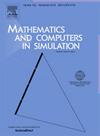基于极大极小凹罚的泊松图像恢复TGV模型
IF 4.4
2区 数学
Q1 COMPUTER SCIENCE, INTERDISCIPLINARY APPLICATIONS
引用次数: 0
摘要
众所周知,基于全广义变分正则化的去噪模型虽然防止了阶梯伪影的出现,但也容易导致恢复图像的边缘模糊。为了获得符合人类视觉特征的高质量图像,在广义变分函数中加入极大极小凹惩罚,建立了一种基于Kullback-Leibler散度保真度的泊松图像恢复模型。通过积分变量分裂技术,设计了一种改进的乘法器交替方向法进行数值计算。此外,在适当的参数选择下,详细证明了算法的收敛性。作为实验验证,我们进行了各种数值实验,将我们的新求解器与现有的一些最先进的方法进行了比较。数值实验表明,该方法不仅能很好地保留结构特征,而且与其他去噪方案相比,恢复效果相当。本文章由计算机程序翻译,如有差异,请以英文原文为准。
Minimax concave penalty-based TGV model for Poissonian image restoration
As is known to all, although the denoising models based on total generalized variation regularization prevent the occurrence of staircase artifacts, they also tend to result in blurred edges in the restored images. In order to obtain high-quality images that conform human visual characteristics, we add a minimax concave penalty into the total generalized variation function, and develop a novel Kullback–Leibler divergence fidelity-based model for Poissonian image restoration. By integrating the variable splitting technique, a modified alternating direction method of multipliers is designed for numerical computation. Moreover, under proper parameter selection, the convergence of our proposed algorithm is established in detail. As the experimental validations, we have conducted a variety of numerical experiments comparing our new solver with some existing state-of-the-art methods. From the numerical experiments, it follows that our approach can not only preserve structural features well, but also achieve comparable recovery effects over other denoising schemes.
求助全文
通过发布文献求助,成功后即可免费获取论文全文。
去求助
来源期刊

Mathematics and Computers in Simulation
数学-计算机:跨学科应用
CiteScore
8.90
自引率
4.30%
发文量
335
审稿时长
54 days
期刊介绍:
The aim of the journal is to provide an international forum for the dissemination of up-to-date information in the fields of the mathematics and computers, in particular (but not exclusively) as they apply to the dynamics of systems, their simulation and scientific computation in general. Published material ranges from short, concise research papers to more general tutorial articles.
Mathematics and Computers in Simulation, published monthly, is the official organ of IMACS, the International Association for Mathematics and Computers in Simulation (Formerly AICA). This Association, founded in 1955 and legally incorporated in 1956 is a member of FIACC (the Five International Associations Coordinating Committee), together with IFIP, IFAV, IFORS and IMEKO.
Topics covered by the journal include mathematical tools in:
•The foundations of systems modelling
•Numerical analysis and the development of algorithms for simulation
They also include considerations about computer hardware for simulation and about special software and compilers.
The journal also publishes articles concerned with specific applications of modelling and simulation in science and engineering, with relevant applied mathematics, the general philosophy of systems simulation, and their impact on disciplinary and interdisciplinary research.
The journal includes a Book Review section -- and a "News on IMACS" section that contains a Calendar of future Conferences/Events and other information about the Association.
 求助内容:
求助内容: 应助结果提醒方式:
应助结果提醒方式:


